|
Sugaraka Sucrose, Glucose, Fructose, Kiddie Crack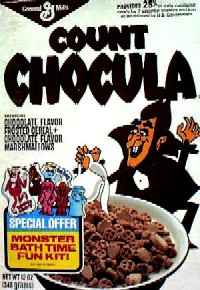 You wouldn't give heroin to a four-year-old. (At least, we assume so, you sick fuck.) But you don't hesitate to jack that kid up with heroic doses of the most successful recreational drug in the history of mankind, sugar—a highly addictive, mood-altering, health-threatening substance that encourages antisocial behavior. (And after you get that kid hopped up on sugar, you have to give him Ritalin to get him to sit still. You sick fuck.)
You wouldn't give heroin to a four-year-old. (At least, we assume so, you sick fuck.) But you don't hesitate to jack that kid up with heroic doses of the most successful recreational drug in the history of mankind, sugar—a highly addictive, mood-altering, health-threatening substance that encourages antisocial behavior. (And after you get that kid hopped up on sugar, you have to give him Ritalin to get him to sit still. You sick fuck.)Known on the streets as glucose, sucrose or fructose, sugar comes in crystal, powder, and liquid forms. It's usually taken orally, and often (but not always) cut with some other food substance.
Sugar occurs naturally in many fruits and vegetables. It's mostly innocuous in its natural form. But refined sugars are an entirely different story. Sugar was available in relatively raw forms for centuries, but it wasn't until the industrial innovations of mass slavery and the breeding of the sugar beet that the sweet stuff became a dietary staple.
Like any drug, the potency of sugar increases dramatically when it is refined. The vast majority of refined sugars used in the U.S. comes from corn, but sugar is also refined from beets, sugar cane plants, maple sap, honey and almost every kind of fruit. Often a very small dose of sugar is enough to get high. The threshold is different for everyone, but the bigger the dose, the more noticeable the effects. The effects of sugar use can include euphoria, increased energy and irritability, increased heart rate, insomnia, tremors, weight gain, ulcers, tooth decay and a depressed immune system. Some psychologists have argued that these are simply placebo effects, based on user and observer expectations. There aren't any reliable surveys on whether those psychologists are themselves habitual sugar users, but the odds dramatically favor that conclusion. The average American ingests around 160 pounds of added sugars per year ("added" meaning not naturally occurring in food, like in an apple), according to the World Health Organization.
Refined sugar is extremely addictive. Not "addictive" in the sense that you just really like it, but addictive in the sense that your body suffers withdrawal symptoms if sugar is removed from your diet. While sugar doesn't have the instantly addictive quality of, say, crack cocaine, recent studies suggest that refined sugar activates opioids, the same brain chemicals that fuel heroin and morphine addiction, with similar results at a lesser magnitude. Drug addiction is defined by a three stage process which includes increased consumption, withdrawal symptoms when a dose isn't available and an urge to relapse even after the drug has been completely removed. Aside from common life experience of these traits by sugar users, clinical studies on rats have shown the addiction pattern at work. The more refined the sugar, the more intense the addiction.
No one is arguing against the responsible use of refined sugar by consenting adults. For that matter, very few people even argue against the moderate, responsible use of sugar by children. Sugar is a naturally occurring substance that is part of a balanced diet. Sugar becomes a social problem because of three major factors. First, society is generally in denial about sugar's addictive qualities. Second, refined sugar is rampantly available in nearly unadulterated form in every single food store in the United States. And third, these refined sugar products are overwhelmingly marketed directly to children by adults who have no moral qualms about using sophisticated psychological techniques to manipulate six-year-olds. Pure sugar products are epidemic in the United States and most developed countries. The vast majority of soft drinks are simply high-fructose corn syrup with only enough water added to make them potable. Usually these drinks include a dash of flavoring as the pretext for liking them. Often, the drinks are paired with high caffeine content, increasing both the stimulation and the addictive power.
In addition to soda pop and candy, sugar is available in a convenient portable form, in jawbreakers and candy bars, where it is sometimes combined with chocolate, a caffeine-bearing substance thay is mildly addictive in its own right. For the hardcore user, sugar is obtainable through gumballs, which provide an intense initial surge of euphoria followed by a longer, mellower dose of sugar, or Pixie Stix. Particularly insidious, Pixie Stix are tubes full of powdered refined sugar with only a touch of food coloring added. The content of a Pixie stick is poured into the mouth, reminiscent of a line cocaine.
As if all that wasn't bad enough, sugar is also a gateway to mind-altering prescription drugs. At the same time that sugar use by children and adults has skyrocketed in the United States, incidents of attention deficit hyperactivity disorder have also soared. The sugar industry insists there is absolutely no basis to link ADHD and sugar. But the rise in sugar consumption conveniently corresponds to the skyrocketing number of children being medicated for ADHD in the U.S. The rate of Ritalin prescriptions in the U.S. rose 400% from 1990 to 1996. From 1978 to 1999, sugar consumption by a typical teenage boy grew 200%.
Thanks to bad parenting like this, combined with two or three generations of children who were weaned on sugary cereals, Americans consume more than 8 million metric tons of added sugar and high fructose corn syrup per year. That's 17.6 billion pounds, or 1.7 trillion teaspoons of the stuff. With that kind of demand, you'd think the sugar industry would be laughing all the way to the bank. Well, you might think that if you were painfully naive and unschooled in the ways of American government. The sugar industry sponsors an annual field trip to Congress, where its representatives whine and bitch about how it's impossible for them to make money, winning various tariffs and subsidies to support their poverty-stricken operations. And that's just cane and beet sugar. Corn subsidies account for billions of dollars of government spending. Directly or indirectly, some of that money goes to pay for marketing that promotes sugar consumption among one-year-olds. While the profusion of new refined sugar types makes it difficult to be precise, the consumption of sugar is only expected to increase in coming years. Perhaps prenatal IVs will be used to deliver the sweet stuff to hip fetuses who want to be a Pepper too. O brave new world, that has such people in't!
|
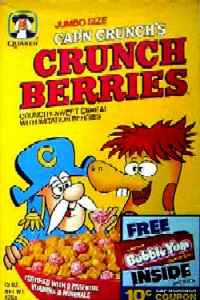 Since the 1800s, there have been steady technological improvements in the refining process. Refined sugar can be produced by several different processes, most of which include grinding the source plant into a pulp, running the pulp through a series of filters and then evaporating what's left to produce a crystallized residue, which can be powdered or dissolved in water.
Since the 1800s, there have been steady technological improvements in the refining process. Refined sugar can be produced by several different processes, most of which include grinding the source plant into a pulp, running the pulp through a series of filters and then evaporating what's left to produce a crystallized residue, which can be powdered or dissolved in water. 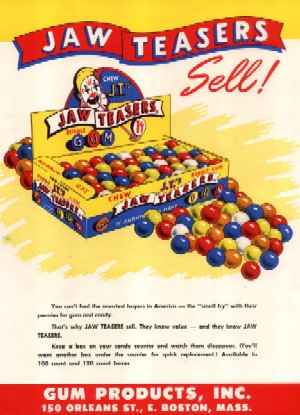 If you are not convinced of that sugar is a drug, we suggest you eat several tablespoons of the substance on an empty stomach. At any rate, the question posed by the psychologists (and by the massive world sugar industry, which funds many studies on this topic) is not whether sugar produces the effects listed above. That's not in question, although the sugar industry would like you to think it is. The studies are only trying to measure the magnitude of the sugar effect.
If you are not convinced of that sugar is a drug, we suggest you eat several tablespoons of the substance on an empty stomach. At any rate, the question posed by the psychologists (and by the massive world sugar industry, which funds many studies on this topic) is not whether sugar produces the effects listed above. That's not in question, although the sugar industry would like you to think it is. The studies are only trying to measure the magnitude of the sugar effect. 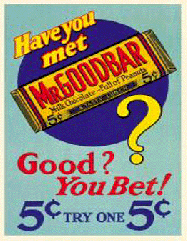 Withdrawal symptoms can include lethargy, tremors, headaches and depression. Generally, these effects are slightly less intense than the similar withdrawal symptoms associated with caffeine.
Withdrawal symptoms can include lethargy, tremors, headaches and depression. Generally, these effects are slightly less intense than the similar withdrawal symptoms associated with caffeine. 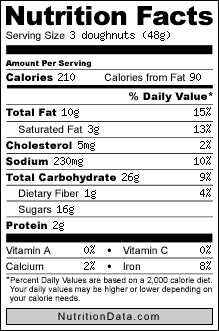 Breakfast cereals are notoriously laden with sugar, often promoted by cartoon leprechauns and bunnies who urge children to go to any length necessary to obtain their precious, precious sugar. Some cereals—such as Cheerios and
Breakfast cereals are notoriously laden with sugar, often promoted by cartoon leprechauns and bunnies who urge children to go to any length necessary to obtain their precious, precious sugar. Some cereals—such as Cheerios and  Sugar is also a gateway drug. It can successfully be combined with other drugs for an amplified effect. Sugar and chocolate can be combined with
Sugar is also a gateway drug. It can successfully be combined with other drugs for an amplified effect. Sugar and chocolate can be combined with 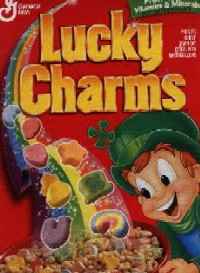 Clove cigarettes and some cigars are often sugar-tipped for a nicotine-sucrose cocktail. (Cloves are also mild anesthetics.) Heroin is often cut with sugar to reduce its potency. Liquid
Clove cigarettes and some cigars are often sugar-tipped for a nicotine-sucrose cocktail. (Cloves are also mild anesthetics.) Heroin is often cut with sugar to reduce its potency. Liquid 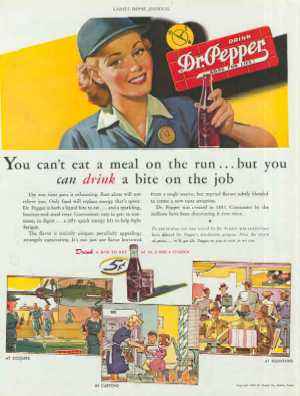 In fact, according to the 2001 book Fast Food Nation, a fifth of children aged one and two years old drink soda. Soda makers like Dr. Pepper and Pepsi have included advertising with baby bottles, and amazingly, some parents are idiotic enough to take the bait.
In fact, according to the 2001 book Fast Food Nation, a fifth of children aged one and two years old drink soda. Soda makers like Dr. Pepper and Pepsi have included advertising with baby bottles, and amazingly, some parents are idiotic enough to take the bait.